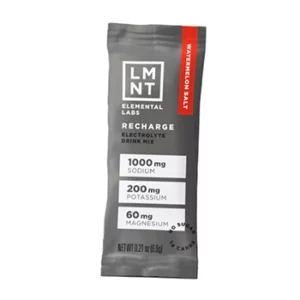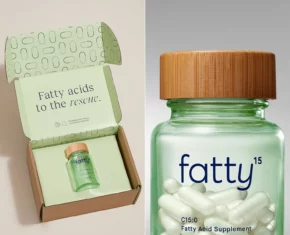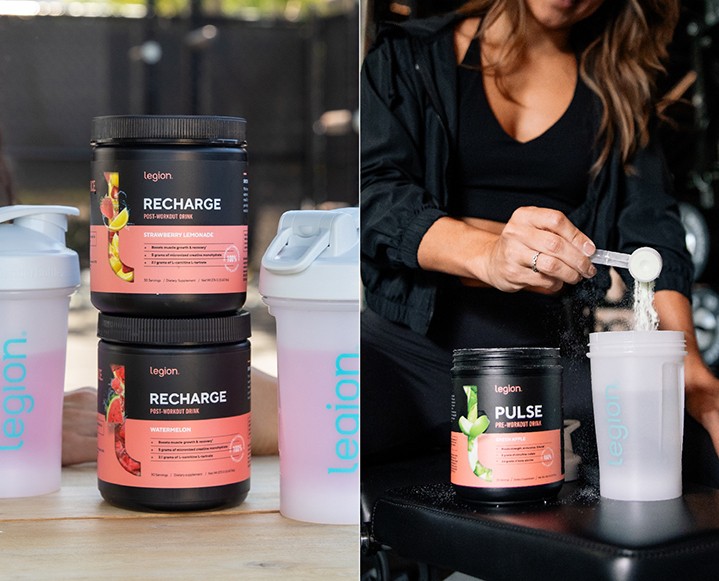We first met cardiothoracic surgeon, Dr. Steven Gundry when he was launching his (now NYT best-selling) book, The Plant Paradox. The Plant Paradox was, arguably, the modern wellness world’s first look at the issue of lectins, plant substances that have since become as controversial as gluten.
If you haven’t read the book, it’s definitely worth a read. While we commiserate with anyone who is overwhelmed by nutrition rules and contradicting wellness philosophies, we are all best-served by digesting the latest research for ourselves!
All that said, the other plant substances that Dr. Gundry champions are polyphenols.
Polyphonols are found in many of our favorite superfoods, but especially olive oil — a food Gundry has told us in many interviews to be a main staple in his diet.
We just received the doctor’s new line of olive oil products made in Morocco, whose harsh desert environment “triggers a ‘nutrient surge’ that can give olive oil 30x more hydroxytyrosol polyphenols than conventional brands.”1
His Polyphenol-Rich Olive Oil is spicier and more bitter than what you’d expect from an extra virgin olive oil — we recommend blending it into herb-rich salad dressings and potent recipes like pesto — and his weirdly delicious Polyphenol Pearls are like vegan caviar, a mixture of olive leaf extract in oil that Gundry claims are “like getting the benefits of 2.5 gallons of regular olive oil in a teaspoon”.
Dr. Gundy On Polyphenols, Blue Zones + Olive Oil
The Chalkboard Mag: Let’s start with the basics. Would you give us the low down on polyphenols for those who are not familiar?
Dr. Gundry: Olive oil, chocolate, dark berries, artichokes, chicory, walnuts, green tea and spices are some of the richest food sources of polyphenols.
These compounds are critical for protecting the plant from the damaging effects of sunlight. While plants have to have sunlight to make energy, the old saying “can’t live with it and can’t live without it” sums up the role of polyphenols for plants.
Polyphenols are used by the plant to protect its leaves and fruit from sunlight damage and insects or other predators. The beautiful fall colors are actually the polyphenols in leaves that are always there, but hidden by the green chlorophyll during the warmer months.
We now know that most plant polyphenols are not “antioxidants” when eaten by humans, but instead are remarkable prebiotics that improve the diversity of our gut microbiome. The gut microbiome, in turn, makes these compounds into absorbable mitochondrial protective and anti-cancer compounds.
Remarkably, the Spice Trade of the Middle Ages was based on the polyphenol content of the popular spices! So, if it’s a spice or an herb, you can bet the polyphenol content is high. Moreover, the coffee and tea trade, as well as cocoa, owes their popularity to the polyphenol benefits of these compounds. Same with olive oil. If a leaf or fruit is orange, yellow, red, purple, or dark blue, you can bet one or more forms of polyphenols will be in there.
Fun fact: in general, the leaves of fruit trees have more polyphenols than the fruit itself.
TCM: Back when we interviewed you for your first book, you mentioned just how much olive oil you eat daily. Still true? Tell us how much you recommend for most?
DG: I try to use a liter of olive oil per week, but, thanks to my discovery of the high-polyphenol olive oil from Morocco that we bottle for GundryMD, a shot a day will give you the equivalent of a liter per week of regular olive oils!
Moreover, our Olive Oil Pearls are a “vegan caviar” of pressed olive leaves, olives, and olive oil. The Pearls are so concentrated with polyphenols that a teaspoon a day is all you need. And it’s delicious!
TCM: A shot or teaspoon a day seems best to incorporate into daily meals. What’s your favorite way to enjoy olive oil?
DG: Remember my saying: “The only purpose of food is to get olive oil into your mouth!” I love olive oil on any food. Remember to not only cook with it (it has the least oxidation of any cooking oil, even though it has a low smoke point), but bring it to the table and pour it on anything you are eating. I’m including one of my favorite recipes below.
TCM: Let’s talk about the famous ‘Blue Zones’ and the polyphenol connection…
DG: Yes, two of the longest living people groups in the “Blue Zones” (coined by Dan Buettner) use a liter or olive oil per week!
As I mentioned above, not only is olive oil a great source of polyphenols among many of the Blue Zones, but other Blue Zones have their own polyphenol bounty, like the purple sweet potato of the Okinowans, for instance.
TCM: Beyond olive oil, what are other high-polyphenol foods you like to enjoy?
DG: One of my favorite tricks to get more polyphenols is “reverse juicing.” Use the pulp leftover from juicing your favorite fruits and use it to stir into coconut or goat yogurt. I like to put that fruit pulp into salad dressings,or freeze into cubes and add to smoothies and sauces as well.
This is a recipe for one of my favorite polyphenol-rich salads topped, naturally, with plenty of olive oil…
A Nutrient-Dense Polyphenol Salad
¼ c. sesame seeds
¼ cup extra virgin olive oil















